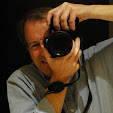Tokyo City HallA 20 second exposure of Tokyo City Hall and clouds. The building cost more than $1 Billion US. The architect was Kenso Tange.
Tange's early thinking was influenced by Le Corbusier, as evidenced in his urban philosophy calling for comprehensive cities filled with megastructures that combine service and transportation elements. Other artistic influences included Italian Renaissance master Michelangelo and 20th-century German-American architect Walter Gropius.Source: ArchitectureWeek
"Tange, in turn, was influential on the next generation of architects. His practice expanded to employ 130 architects around the world by the late 1980s, including architects now well known, such as Fumihiko Maki and Arata Isozaki.
"Tange came to international attention in 1946 when he designed the master plan for rebuilding Hiroshima after its devastation during World War II. His design included a memorial and museum complex where the atomic bomb was dropped on August 6, 1945.
"A recent review of his life by Reuters reports: '...Tange's trademark was a boldly spare and elegant style, blending Japanese and Western aesthetic principles... [He] captured the spirit of a rapidly developing Japan with his swooping 1964 Tokyo Olympic Stadium, often described as one of the most beautiful structures built in the 20th century.'
More detailed information is at GreatBuildings. Here is a google search for relevent images
Still another aspect of architecture and cities in our informational/communication society is inter-architectural relations. In the industrial society, strong emphasis on costs and intense demand for functional sufficiency of individual buildings meant that less thought was given to large functional units, including the building's neighboring structures and surroundings. I think it is difficult to determine which of the two is more important, but in a society that places great stress on communications, relationships with the surroundings probably deserve as much consideration as the functional sufficiency of the individual building.Source: Pritzker Prize Acceptance Speech
His firm's website has a nice line drawing on the main page:

No comments:
Post a Comment